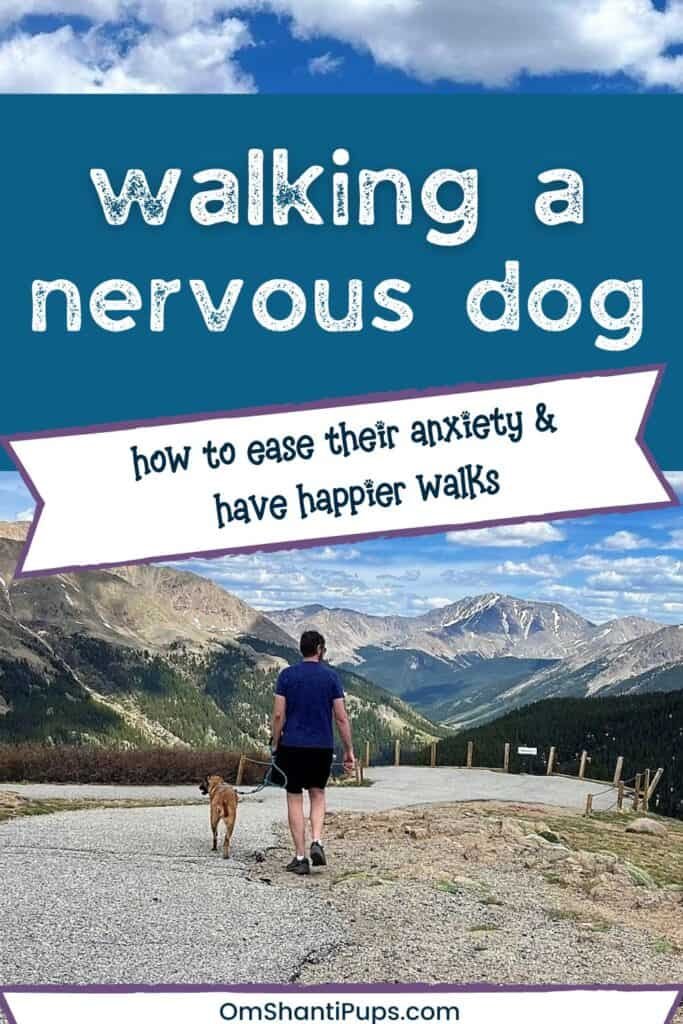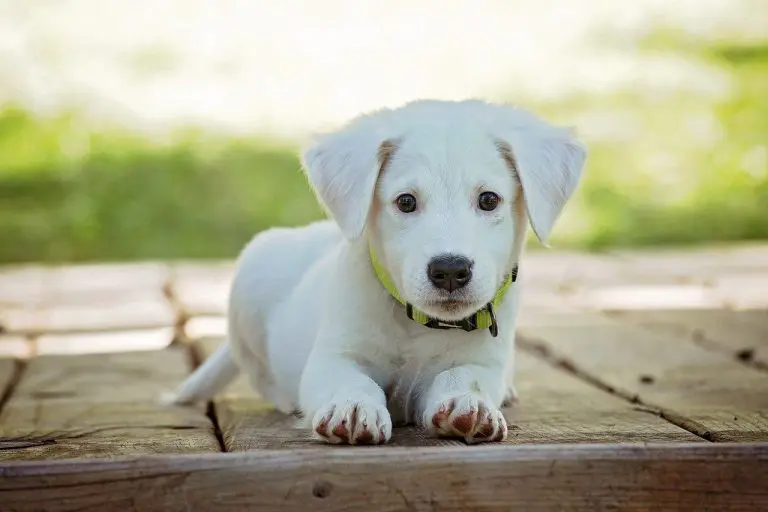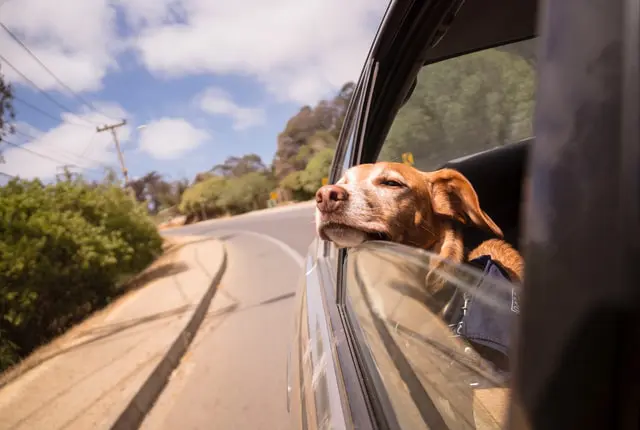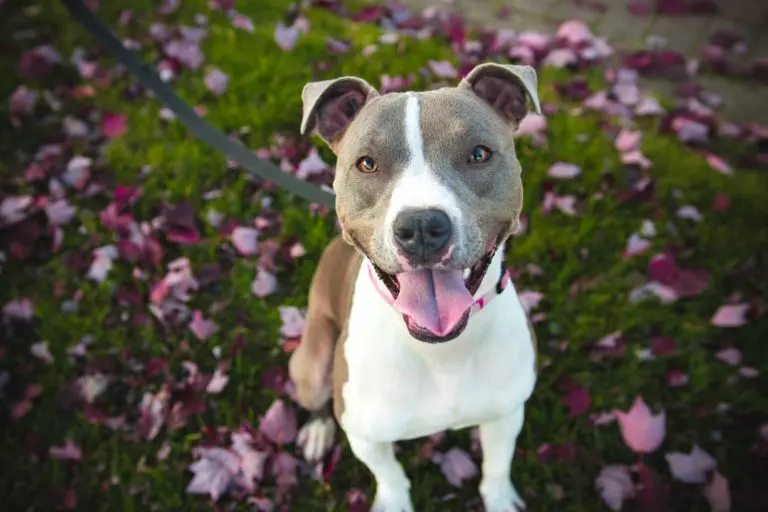Walking A Nervous Dog – A Guide To Easing Their Anxiety
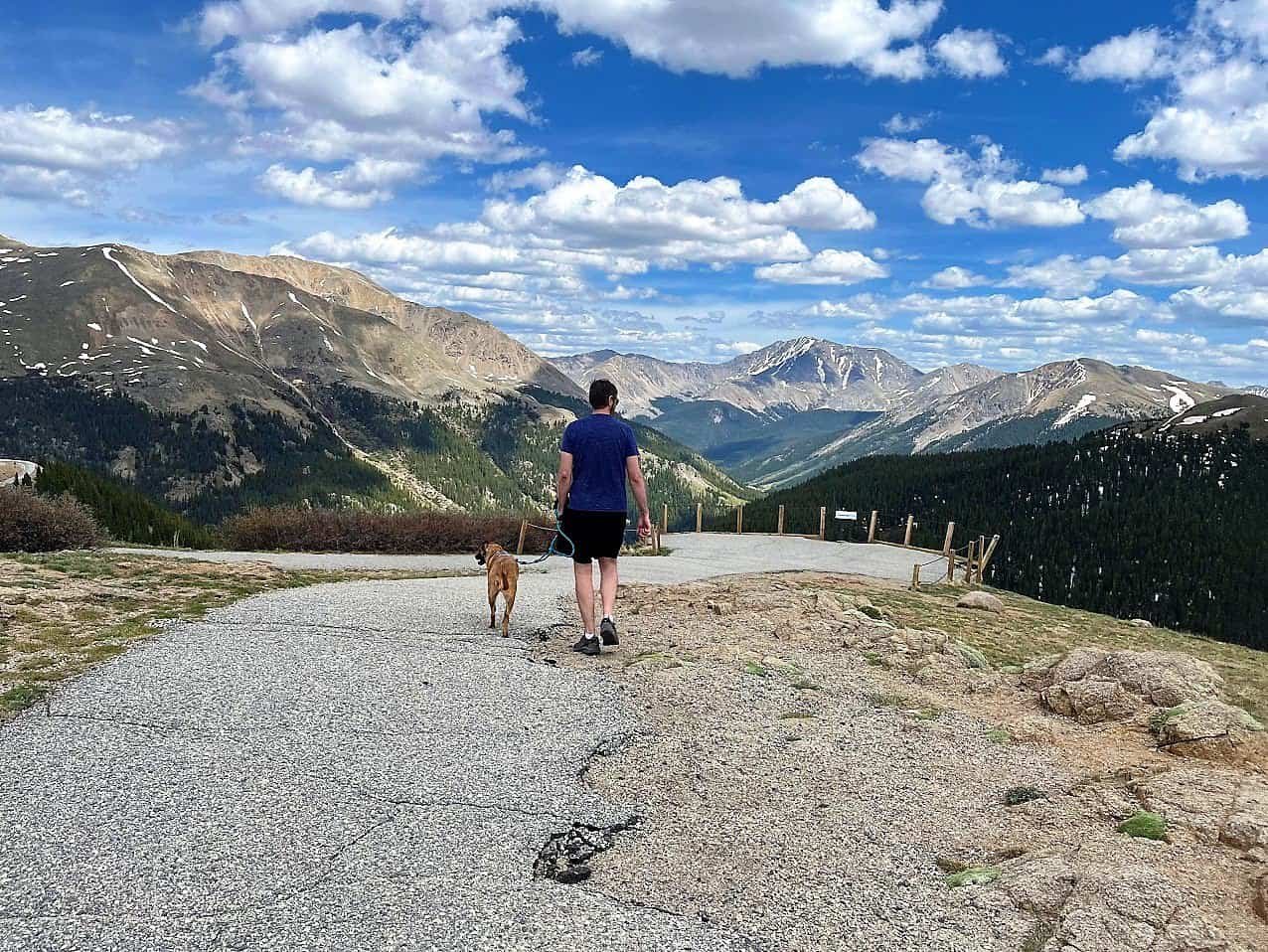
There are some affiliate links below, but they are all products I highly recommend. For more info, view my disclosure here.
We all know walking our dogs is an important part of their daily routine. Daily walks provide them with physical exercise and mental stimulation, as well as an opportunity to socialize and explore the world around them. However, it can be such a challenge walking a nervous dog.
Many dogs react to the word “walk” with pure joy and excitement. It’s generally the highlight of their day. All the interesting sights and sounds, and the whole world to explore!
But for anxious dogs, heading out for a daily walk can be a stressful experience. This can be especially difficult for dogs who are anxious in new or unfamiliar situations, as well as those who have experienced trauma or abuse in the past.
If you have a nervous dog, it’s important to understand their fear and work on helping them overcome it, so that they can enjoy regular walks with minimal stress on themselves and you.
Read on and I’ll provide a step-by-step guide for walking a nervous dog, including tips for understanding your dog’s fear, preparing for the walk, building their confidence, and more!

What Is A Nervous Dog?
A nervous dog is one who exhibits anxious or fearful behavior in certain situations. This can include shaking, panting, hiding, cowering, or trying to escape.
Fear is a natural and normal emotion in dogs, and they may experience fear in response to loud noises, unfamiliar people or animals, or unfamiliar environments.
However, if your dog’s fear is extreme or persistent, it may interfere with their ability to lead a happy and healthy life. It’s best to identify the root cause of your dog’s fear and work on helping them overcome it, so that they can feel more confident and comfortable in new or challenging situations.
How To Tell If Your Dog Is Nervous
Here are some common signs of dog anxiety they may be showing:
- Panting or heavy breathing
- Trembling or shaking
- Hiding or seeking shelter
- Cowering or crouching down
- Ears back or flattened against the head
- Tail tucked between the legs and tense body posture
- Avoiding eye contact
- Yawning or licking their lips excessively
- Whining or barking
- Trying to escape or get away
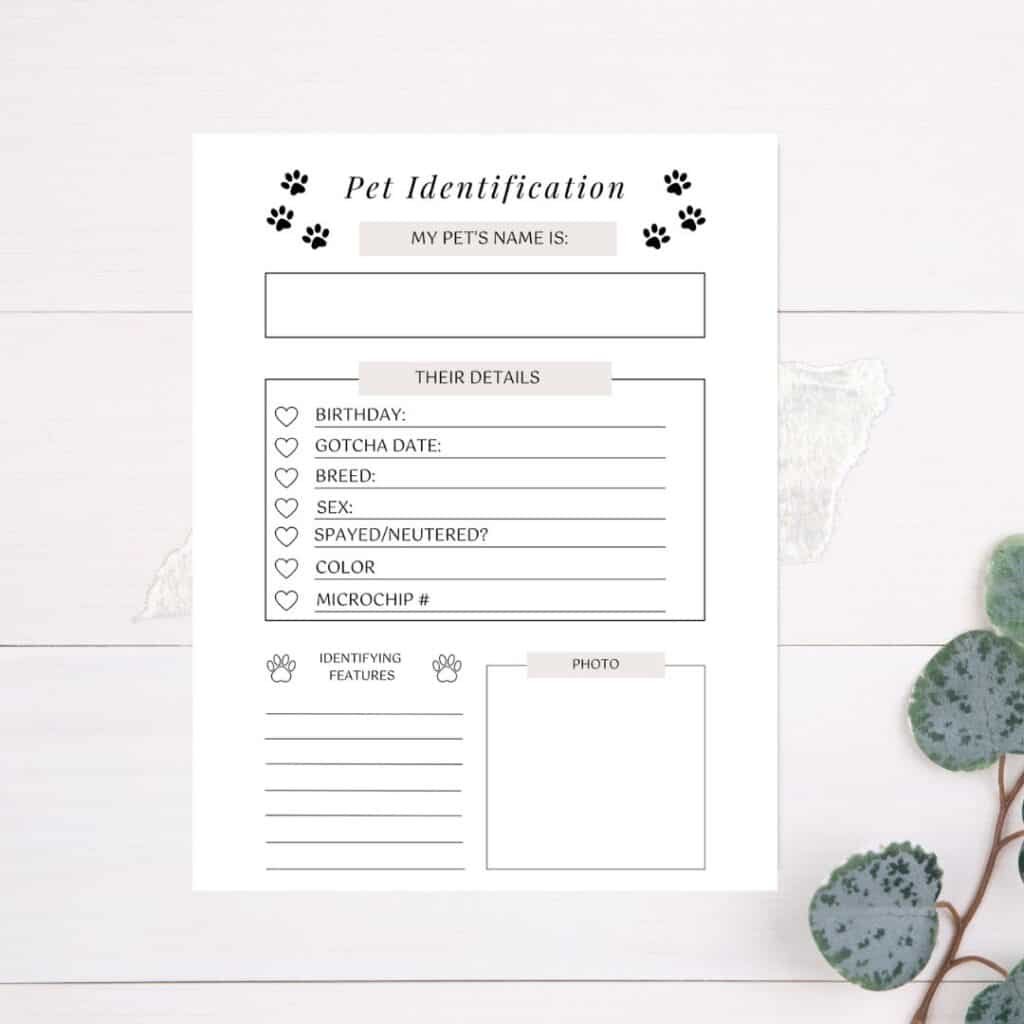
Sign up for our list and get a FREE printable pet identification sheet! It’s super helpful for pet sitters or if your dog wanders away for home!
What Are The Challenges Of Walking A Nervous Dog?
As a dog mom to two nervous rescue dogs, I know how tough it can be! Here are some of the challenges when it comes to walking a nervous dog:
Issues getting them to go outside
If your dog is afraid to go outside, it can be a challenge to get them to go for a walk. They may refuse to leave the house, or try to turn around and go back inside as soon as they reach the door. Roxy still sometimes hits the brakes if she doesn’t feel up to going for a walk.
Struggles getting them to go anywhere
If your dog is very anxious or fearful, they may be reluctant to go anywhere, even in familiar surroundings. They may refuse to leave your side, or constantly look back to make sure you’re there.
A tough time controlling them on the leash
If your dog is nervous or anxious, they may pull on the leash or try to escape. This can make it difficult to keep them under control, and can be stressful for both you and your dog.
Difficulty socializing
If your dog is afraid of other people or animals, it can be difficult to socialize them while on a walk. They may bark, growl, or try to escape when they encounter someone or something new.
Risk of injury
If your dog is very anxious or fearful, they may be more prone to accidents or injuries. For example, they may run into traffic if they are trying to escape from something they are afraid of.
I still remember one of the first times I took Rico for a walk around our neighborhood in Puerto Rico. Ri was a street puppy and was found in a box on the side of the road with a few other puppies. Because of his rough start to life, he was an extremely fearful dog.
I would sometimes take him on walks alone, without Ginger or Roxy, to help build his confidence. We were on our solo walk when we came across a boy rolling around inside one of those giant human hamster balls. Ri was frantic!
We then passed by a bush that was filled with coqui frogs. I don’t know if you’ve heard them before, but they are extremely loud! Rico lost.his.crap. Literally. He had nervous explosive poops and was desperately trying to get away! Which brings me to my next tip…
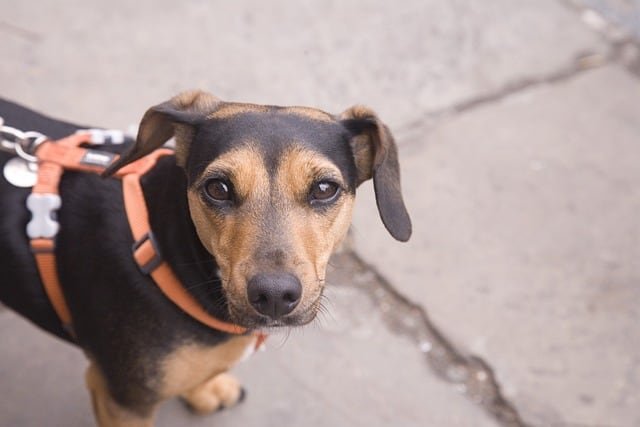
Make Sure You Have the Right Walking Gear
Before you take your dog out on a walk, you need to make sure you’re prepared. Have all of the necessary items to make the walk safe and comfortable for them.
A Collar & Tag
Any time you take your dog out, ensure they have a sturdy collar with their name and your contact details attached on a tag. A waterproof dog collar is great for dogs that like to roll in the dirt or play in puddles.
For tags, we absolutely love RoadID’s The Dog ID tag. They are durable and have loops that wrap around your dog’s collar without clinking around.
Rico’s has lasted years, and even though Roxy likes to roll around in the grass, rub against trees, walls, the fence…basically everywhere, hers lasted about 2 years before the loops broke, but they sell replacement straps super cheap!
A Dog Harness
A comfortable dog harness is a must for walking a reactive dog. Attaching their leash to their collar can cause health issues if your dog gets spooked and pulls away abruptly, so a harness is the best way to walk a nervous dog.
A Sturdy Leash
A good leash should be comfortable for both you and your dog, and it should have a length that is appropriate for your dog’s size and allows them a bit of room to explore without getting too far. Here’s our favorite dog leashes!
Tasty Dog Treats
I bring plenty of tiny, bite-size high-value treats to reward them for positive association with other dogs or people. Making sure your pet is comfortable will encourage them to associate walks with positivity and fun. Positive reinforcement is always a good idea and goes a long way in building good habits! Rico’s love language is bacon, so I break it into bits for small treats.
Poop Bags
This one should go without saying, but don’t forget the poop bags! Even if your dog doesn’t usually poop on walks, the one time you don’t bring a bag, they’re almost guaranteed to poop.
It can be difficult to manage all these items. I have a dedicated dog-walking bag I put on before heading out.
This bag from PetAmi is perfect for taking Roxy and Rico out for walks. It’s got enough storage for my phone, keys, poop bags, and their snacks. It can be used as a shoulder bag or used as a belt.
I’ve used it for long hikes and it’s perfect! You can even fit a bottle of water in there to quench their thirst if you’re going on an extended walk or if it’s very warm out (or if you need to clean up nervous poops!).

Sign up for our list and get a FREE printable pet identification sheet! It’s super helpful for pet sitters or if your dog wanders away for home!
Always Keep Your Dog On A Leash
Many dog owners are tempted to let their dog walk off the leash. It allows them to exert more energy, bounding across fields or other spaces you may be walking them in.
However, it truly is best to keep them on-leash while out in public, unless you are in a dog park or other area where dogs are allowed to be off leash. You also need to be 100% confident in your dog’s recall before letting them off-leash. Plus, it’s the law in most places to keep them leashed.
Nervous dogs are easily frightened or surprised and chances are that when something intimidates them, they’ll set off in the opposite direction.
While this is an instinctive reaction, it could prove extremely dangerous for them – they could get lost, they could stumble and hurt themselves, or they could run directly into a road or other dangerous space.
If Rico didn’t have a sturdy leash and harness on that time he got spooked, I’m sure he would have taken off and hidden somewhere and we may not have found him. It’s just not worth the risk to let a nervous dog off-leash.
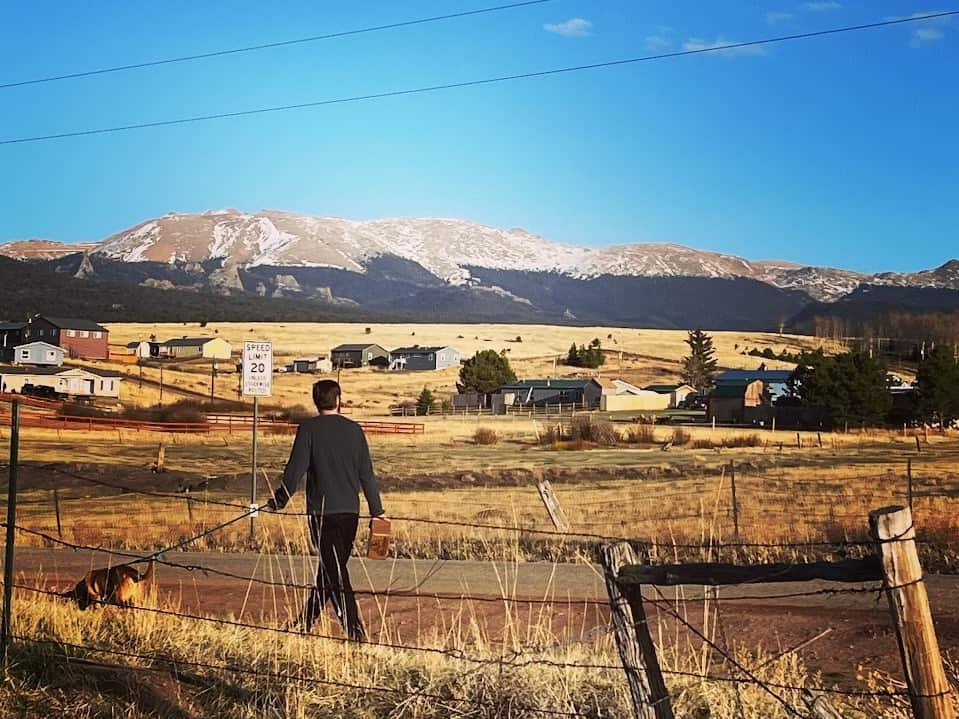
Set Up A Walking Routine
By establishing a consistent routine, you can help your dog to feel more secure and confident, and can help to reduce your dog’s anxiety and fear. Here are some tips for establishing a routine:
Choose a consistent time
Choose a consistent time for your dog’s walks, and try to stick to this schedule as closely as possible. This can help your dog to anticipate and look forward to their walks.
Establish a routine before the walk
Before you begin the walk, go through the same routine each time. For example, you might put on your dog’s harness and leash, give them a treat, and take them outside to a designated spot to do their business.
Use a consistent route
Choose a consistent route for your walks, and try to stick to it as closely as possible. This can help your dog to become familiar with their surroundings and feel more comfortable.
Keep the walk length consistent
Try to keep the length of your walks consistent, within reason. If your dog is very anxious, shorter walks may be more comfortable for them at first. As they become more confident, you can gradually increase the length of your walks.
Stay Calm & Confident While Walking Your Nervous Dog
Your dog will take cues from you, so it’s important to stay calm and confident when walking them. One of the most important aspects of walking a nervous dog is helping them to build their confidence.
Slowly introduce your dog to new people, places, and experiences. Whenever your dog exhibits good behavior or calmness in a new or challenging situation, be sure to reward them with treats, praise, or affection. This will help to reinforce their positive behavior and build their confidence.
If you are having difficulty helping your dog overcome their fear or anxiety, or if their fear or anxiety is severe, it may be helpful to seek the assistance of a professional dog trainer or veterinary behaviorist. They can provide you with more specific guidance and support, and help you determine if anti-anxiety medication can be helpful.
Don’t Be Shy About Alerting Others to Your Dog’s Personality
Some dogs feel threatened or intimidated by other dogs or have a fear of strangers. So, if someone is allowing their dog to approach your dog, or if they are heading to pet your dog uninvited, don’t be afraid to say something.
Politely explain that your pet is anxious and request that they keep their distance and call their own dogs away. As pet parents, you’re your dog’s advocate and it’s up to you to keep them safe.
In our case, we’re lucky that Roxy absolutely adores attention from humans on walks, so she happily accepts pets. Meanwhile, Rico is laser-focused on getting wherever we are going!
Stick With Frequent Walks
Rico is very anxious when meeting new people, and as his mom, it’s my job to help him through scary situations.
Since we have a large fenced backyard, it would be easy to avoid walks altogether, but that doesn’t do him any favors with overcoming fears.
The more often we stick with walks, the easier they get for him to manage and actually have fun during them.
We definitely slack off a bit during the winter when it’s below zero out, but try to get out as much as possible when it warms up.

By following these steps, we’ve been able to successfully take Roxy and Rico out on adventures like hiking around Garden of The Gods even when it’s busy! They still struggle a bit with walks around the neighborhood when we come across the many deer that wander nearby, but they’ve gotten a million times better!
Sure, walking a nervous dog can be a little more difficult and take more preparation than walking your average dog. But hopefully, the above advice will help to make the entire process as simple as possible for both of you, allow you to take relaxing walks, and you can have a tired, happy dog at the end of the day!
ABOUT THE AUTHOR

Hi, I’m Natasha!
I’m an active dog rescue advocate and love all things dog! I live in the mountains of Colorado with my husband Dan and our two crazy rescue pups, Roxy & Rico. See more here or reach me hello@crazyhappydogs.com
